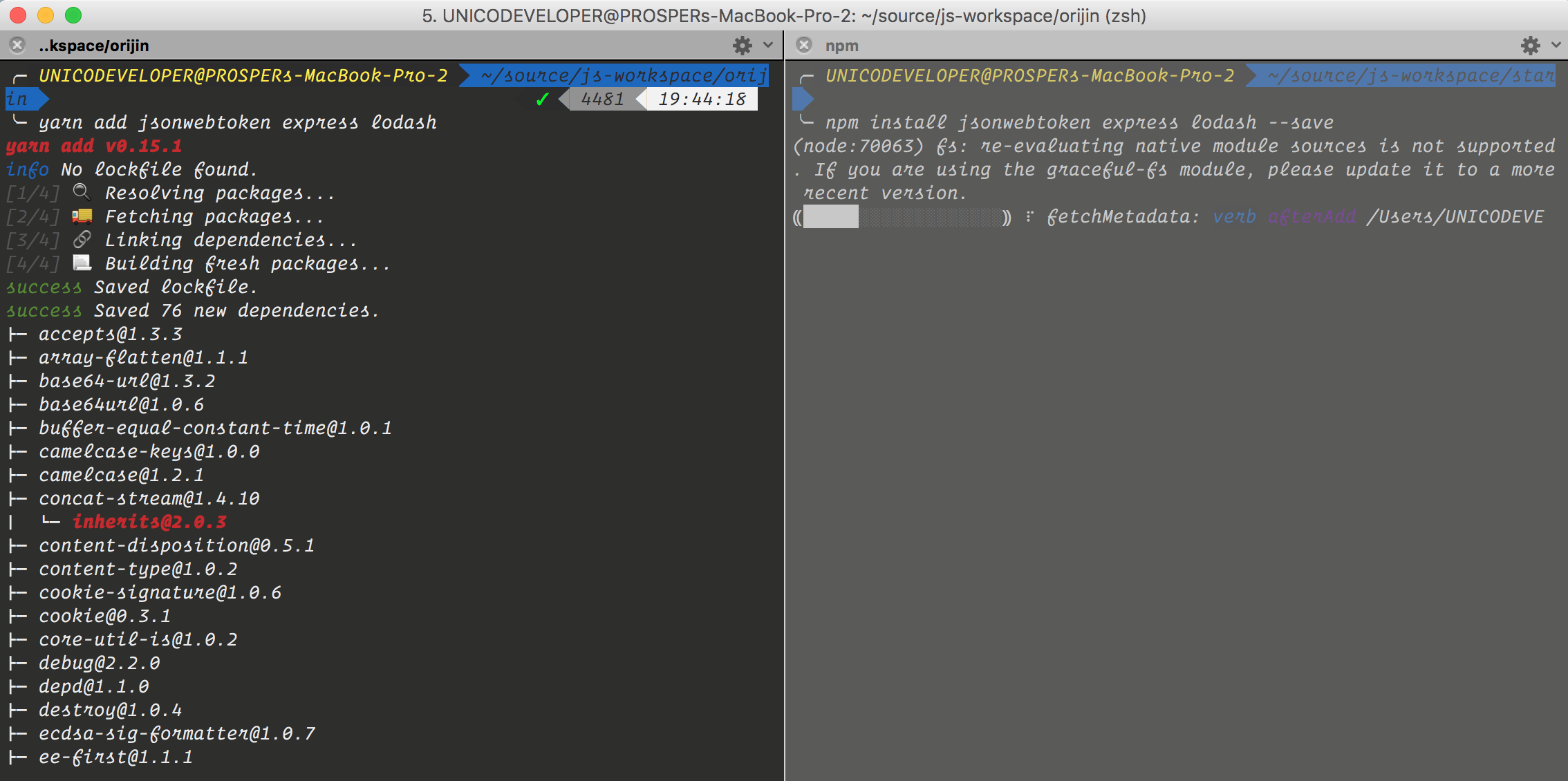TL;DR: There are several package managers in the JavaScript land: npm, bower, component, and volo, to name a few. As of this writing, the most popular JavaScript package manager is npm. The npm client provides access to hundreds of thousands of code libraries in the npm registry. Just recently, Facebook launched a new package manager for JavaScript called Yarn, which claims to be faster, more reliable, and more secure than the existing npm client. In this article, you will learn five things you can do with Yarn.
Yarn is a new package manager for JavaScript created by Facebook. It offers a fast, highly reliable, and secure dependency management for developers using JavaScript in their apps. Here are five things you can do with Yarn.
1. Work Offline
Yarn offers you the ability to work in offline mode. If you have installed a package before, you can install it again without an internet connection. A typical example is shown below:
When connected to the internet, I installed two packages with Yarn like so:



After the installation was complete, I went ahead and deleted the node_modules inside my orijin directory and also disconnected from the Internet. I ran Yarn like so:

Voilá! All the packages were installed again in less than two seconds. Apparently, Yarn caches every package it downloads so it never needs to do so again. It also maximizes resource utilization by parallelizing operations so that install times are faster than ever.
2. Install from Multiple Registries
Yarn offers you the ability to install JavaScript packages from multiple registries, such as npm, bower, your git repository, and even your local file system.
By default, it scans the npm registry for your package as follows:
yarn add <pkg-name>
Install a package from a remote gzipped tarball file as follows:
yarn add <https://thatproject.code/package.tgz>
Install a package from your local file system as follows:
yarn add file:/path/to/local/folder
This is particularly helpful for developers who constantly publish JavaScript packages. You can use this to test your packages before publishing them to a registry.
Install a package from a remote git repository like so:
yarn add <git remote-url>


3. Fetch Packages Speedily
If you have used npm for a while, you must have had experiences where you had to run
npm installYarn efficiently queues up requests and avoids request waterfalls to maximize network utilization. It starts by making requests to the registry and recursively looking up each dependency. Next, it looks in a global cache directory to see whether the package has been downloaded before. If it hasn't, Yarn fetches the tarball package and places it in the global cache to enable it to work offline and eliminate the need to re-download.
During install, Yarn parallelizes operations, which makes the install process faster. I did a fresh install of three packages, jsonwebtoken, express and lodash, using npm and yarn. After Yarn was finished installing them, npm was still installing.
4. Lock Package Versions Automatically
Npm has a feature called shrinkwrap, which is intended to lock down your package dependencies for production use. The challenge with shrinkwrap is that every developer has to manually run
npm shrinkwrapnpm-shrinkwrap.jsonWith Yarn, it's a different ball game. During installation, a
yarn.lockcomposer.lockyarn.lock5. Install Dependencies the Same Way across Machines
The npm client installs dependencies in a way that can make the structure of the contents of Developer A
node_modulesWith Yarn, the presence of a lock file and an install algorithm ensures that the dependencies installed produce the exact same file and folder structure across development machines and when deploying applications to production.
Note: One more thing, I know I promised five but I can't help tell you how good Yarn makes me feel. Enterprise environments require the ability to be able to list a dependencies' license type. Yarn offers the ability to list the license type for a given dependency by running
yarn licenses lsAside: Using Auth0 with Yarn
Auth0 issues JSON Web Tokens on every login for your users. This means that you can have a solid identity infrastructure, including single sign-on, user management, support for social identity providers (Facebook, GitHub, Twitter, etc.), enterprise identity providers (Active Directory, LDAP, SAML, etc.) and your own database of users with just a few lines of code.
We can easily set up authentication in our JavaScript apps by using Auth0's Centralized Login Page. You can easily install the
auth0-jsyarn add auth0-js
It installs the library within seconds and locks down the exact version with the aid of the
yarn.lockConclusion
Yarn in its infancy has already brought significant improvements in the way JavaScript packages are fetched from global registries into local environments, especially with regard to speed and security. Will it grow to become the most popular choice among JavaScript developers? Have you switched yet? What are your thoughts about Yarn? Let me know in the comments section! 😊
About the author

Prosper Otemuyiwa
Former Auth0 Employee


